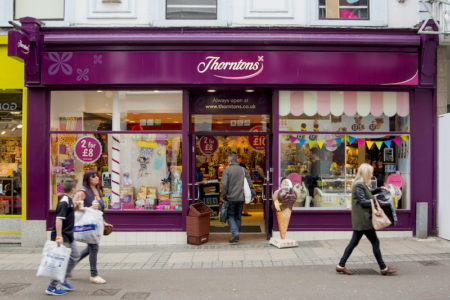Guest blog: HFSS regulations governing indulgent products may be well meaning, but will they make a difference?

Stefan Lagerqvist, CEO of Swedish-founded food-tech company Nick’s, offers his views on the new HFSS legislation introduced in the UK, designed to remove tempting treats from supermarket checkouts, as well as offer greater regulation on television advertising. Will it have an impact on troublingly high obesity rates? or will it simply mean people go out of their way to track down conventional product ranges, wherever they are placed in stores?
“This isn’t the first time that new regulations are being introduced in the UK. The sugar tax, first implemented in 2018, saw many drink makers reduce their sugar content by up to 50%, often with little impact on sales. That said, it is far easier to reduce the sugar content in sodas whilst retaining the same taste; the difficulty comes in making HFSS-compliant confectionery products that don’t taste like cardboard. The major players will do their best to get there, but I don’t think the taste and texture will match the consumers’ expectations. After all, most people buy confectionery to indulge, and not to lose weight – otherwise one would buy a carrot. Unless the taste and texture of HFSS-compliant bars improve significantly, consumers will simply make the extra effort to buy conventional, sugar-high products.
A new 9pm watershed has been proposed, meaning that HFSS products will not be allowed to advertise on terrestrial television after this point. This means that confectionary brands are likely to turn to other avenues, such as digital marketing and social media advertorials, to sell their products. The worry is that the target audience for these new measures – young people – are typically not the age bracket that watches television – so one has to question how impactful this measure is going to prove to be.
Essentially, the two are intrinsically linked; unless confectioners radically change their processes to make HFSS-complaint products that taste good, consumers will simply not make the switch to low-sugar alternatives.
The confectionery market can, and should, be inspired by the trajectory of colas and fizzy drinks. Soda brands have been tireless in recent decades in expanding their ranges of sugar-free products; where once full-sugar Coke was king, consumers now routinely choose Coke Zero or Diet Coke. When it comes to reducing sugar however, drinks companies have the luxury of diluting their products by adding artificial sweeteners – something confectioners cannot do. In this regard, altering sugar content without impact flavour will be a more arduous task. And, relatively few are doing what we are doing in terms of only using naturally occurring ingredients in their low-sugar products.”



